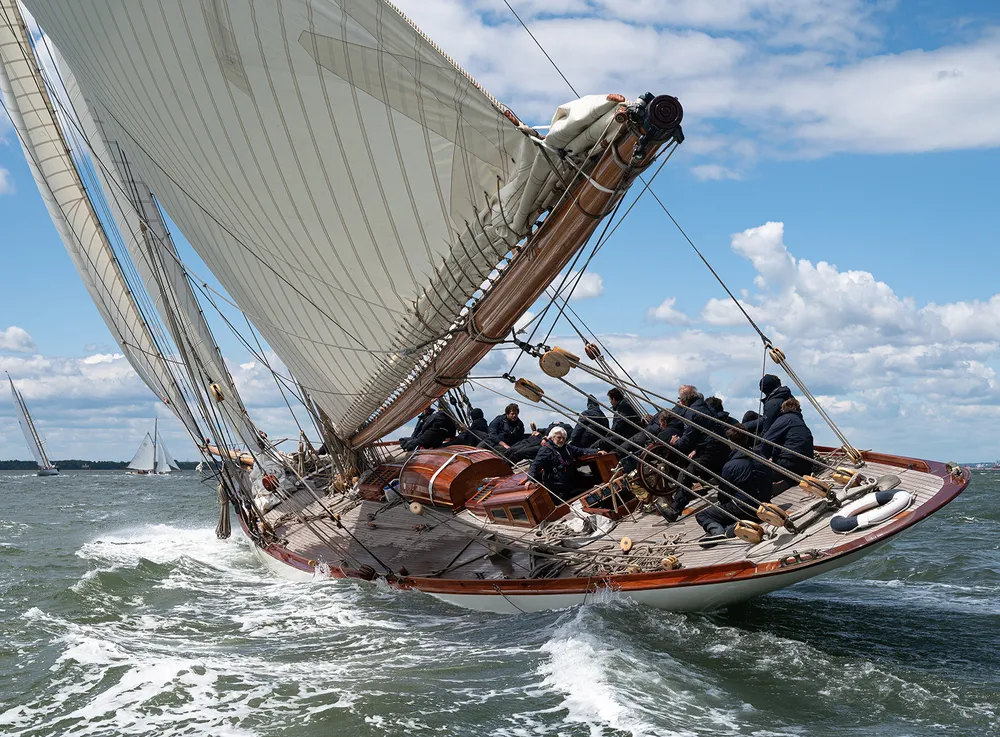For its 2nd edition, the Richard Mille Cup brought together legendary classic boats for two weeks of racing between England and Normandy, from June 2 to 15, 2024.
Text: Brice Lechevalier
Created by a group of enthusiasts federated and supported by the eponymous watch brand, the Richard Mille Cup is unique both in its course and in the profile of its competitors. To take part, yachts must be at least 10 meters long at the waterline, built before 1939, or be extremely faithful replicas of yachts from that era, and still be capable of racing. Sunday yachtsmen abstain! Thirteen units lined up in three categories at the start of the second edition in Falmouth, including the famous Mariquita, Moonbeam and Moonbeam IV, in a series of coastal races (over 8 days) and offshore races (totaling 255 miles), night and day, to reach Dartmouth, Cowes and Le Havre, inspired by pre-war races. At each stopover, the fleet was hosted by a yacht club whose history is rooted in early 20th-century racing: Royal Cornwall YC, Royal Dart YC, Royal Yacht Squadron and Société des Régates du Havre, which in 1911 sailed Mariquita, winner of the RM Cup in her class.
For the first time in a century, three of these boats competed in the same regatta! Skippers was invited aboardElena, a 55-m schoonerthat is an exceptional reproduction of the eponymous schooner designed by Nathaniel Herreshoff, “the Bristol magician”, whose original drawings from 1910 have been preserved. This two-masted racing yacht held the record for the Transatlantic Race (1928). Her main opponent in the Richard Mille Cup was none other thanAtlantic, an incredible replica of the largest racing schooner in American history: 65 m long, 42 m at the waterline, three masts 45 m high and 1,750 m2 of sail area (almost three times as much as a J Class). The two replicas battled it out as fiercely as their ancestors did in the last century, much to the delight of their crews, and ultimately won by Elena.
Their adventure began long before the regatta, especially for Elena , based in the Mediterranean. Steve McLaren, her skipper, concedes that it took a lot of effort to reach England from San Remo, “2,000 miles upwind with winds of 30 knots on the nose, a long way from our comfort zone in the Mediterranean, but what an extraordinary epic!
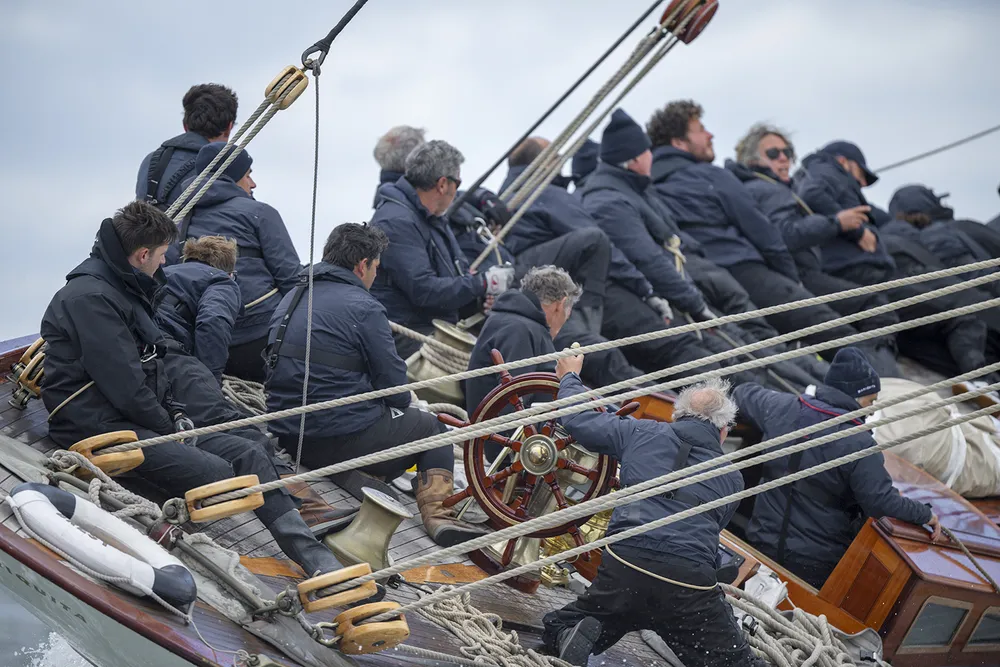
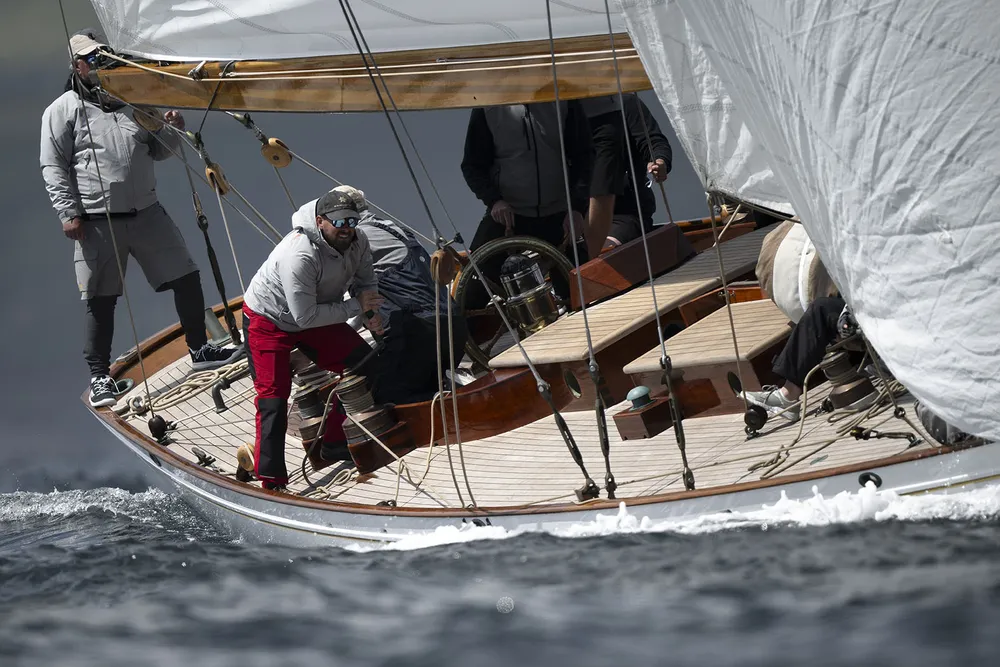
Regatta within a regatta
Reflecting the commitment of the two giants, the race between Dartmouth and Cowes kept all protagonists on their toes from start to finish. Scheduled for 2 p.m., the start was postponed several times by the race committee until 5 p.m. to take into account both the changing weather conditions at the start and the low tide at the finish in the Solent. There was a big bubble just outside the harbor, and the boats that went around it from the north were more successful than us,” comments Patric Clerc, tactician on Elena. For a long time, we were stuck with the windvane pointing one way when it was the other way on deck, so we were getting tossed around and pushed into the current. When the wind came back, Atlantic had a 6-mile lead.” As the day wore on and the wind picked up, the sunset over the English coast and these old rigs offered a magnificent sight.
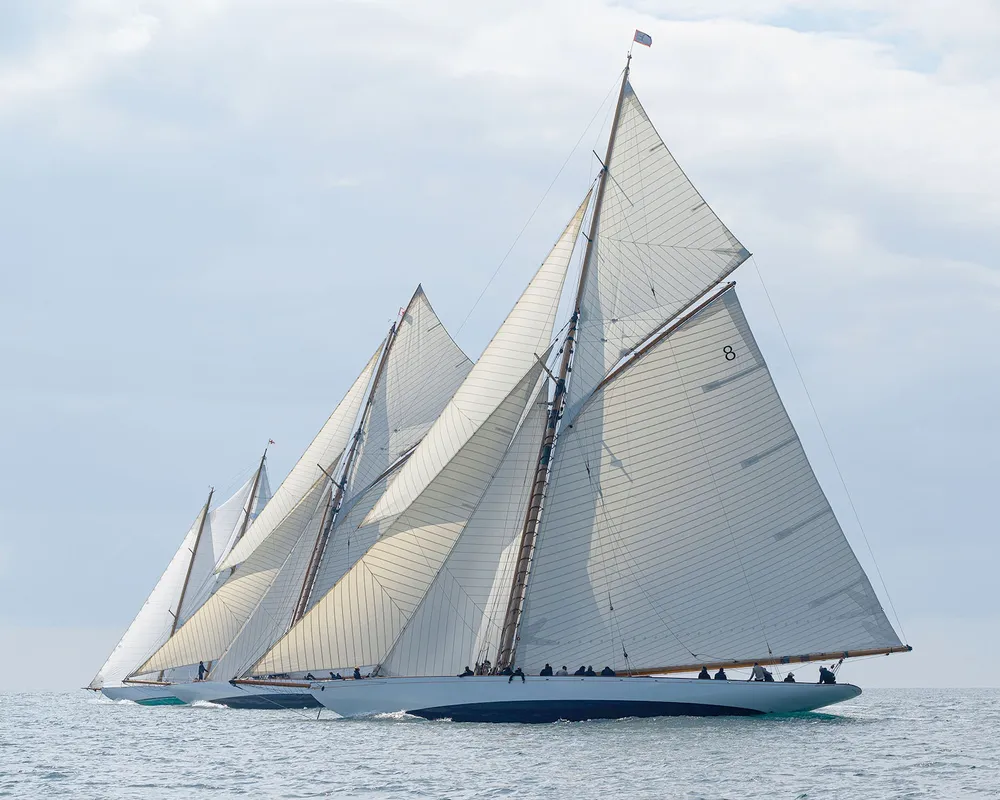
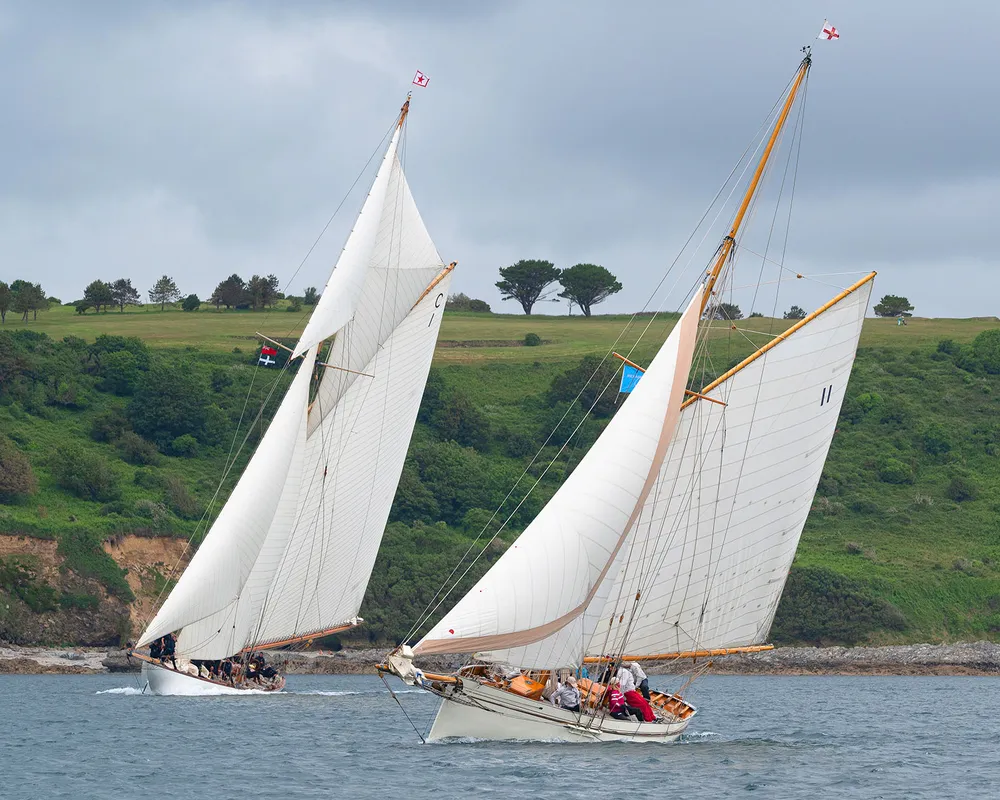
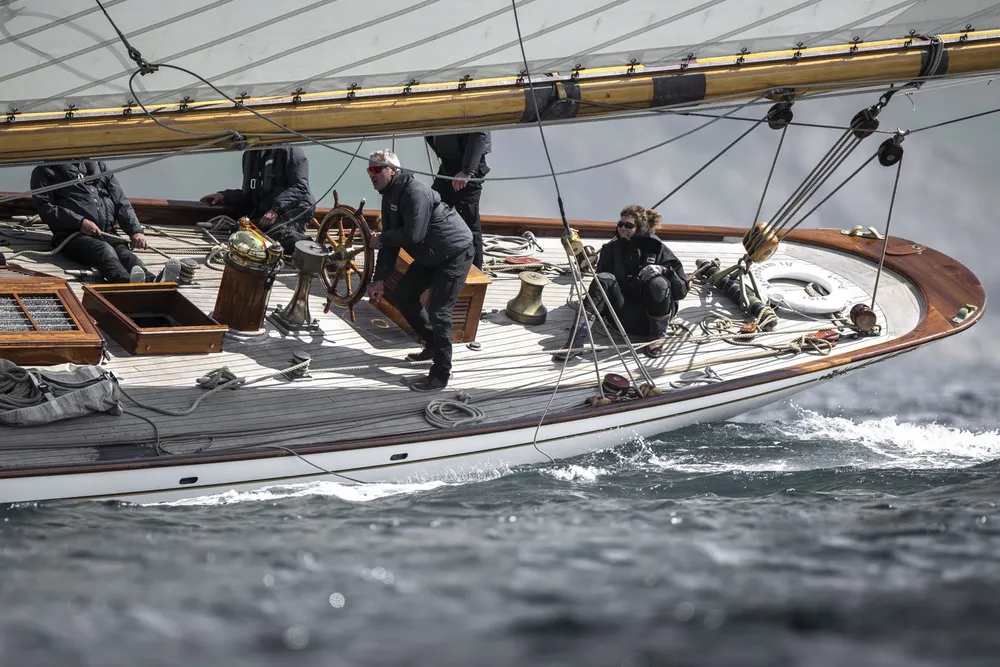
Between 15 and 20 knots, ideal conditions for Elena, leaning at 20 degrees, helped by the current to reach 14-15 knots, an exceptional speed for a yacht with such a displacement of water and which had all its sails out. On deck, the fifteen or so crew members were constantly busy adjusting and optimizing everything they could, their eyes riveted on Atlantic far ahead, having found other winds on a different, longer trajectory, but one which enabled them to enter the Solent with the current, at least at first. “When we got to the Needles around midnight, things got complicated for us with the overturn. We eventually had the choice of going via the North Channel and exiting at Hurst Point, but in the end we took another option, and fortunately so, because our friends from Moonbeam and Mariquita found themselves in difficulty against the current in this bottleneck.
We made our way quietly with 8 knots of wind and 3-4 knots of contrary current, not very easy, but the boat always went correctly in a straight line.” Once again, the crew then changed sails at the entrance to the Channels, opting for the MTS instead of the Fisherman, “and it worked very well: we got close toAtlantic, hung them up, and overtook them!”. Acknowledging their supremacy, theAtlantic crew then turned on all their lights on deck and in the sails, to whichElena ‘s crew responded in kind. Insomniacs in Cowes must have thought they were dreaming at the sight of these two phantom yachts lighting up the night. The Commodore of Cowes’ Royal Yacht Squadron was one of them, praising these true sailors at the evening reception held in their honor at the prestigious bicentennial club.

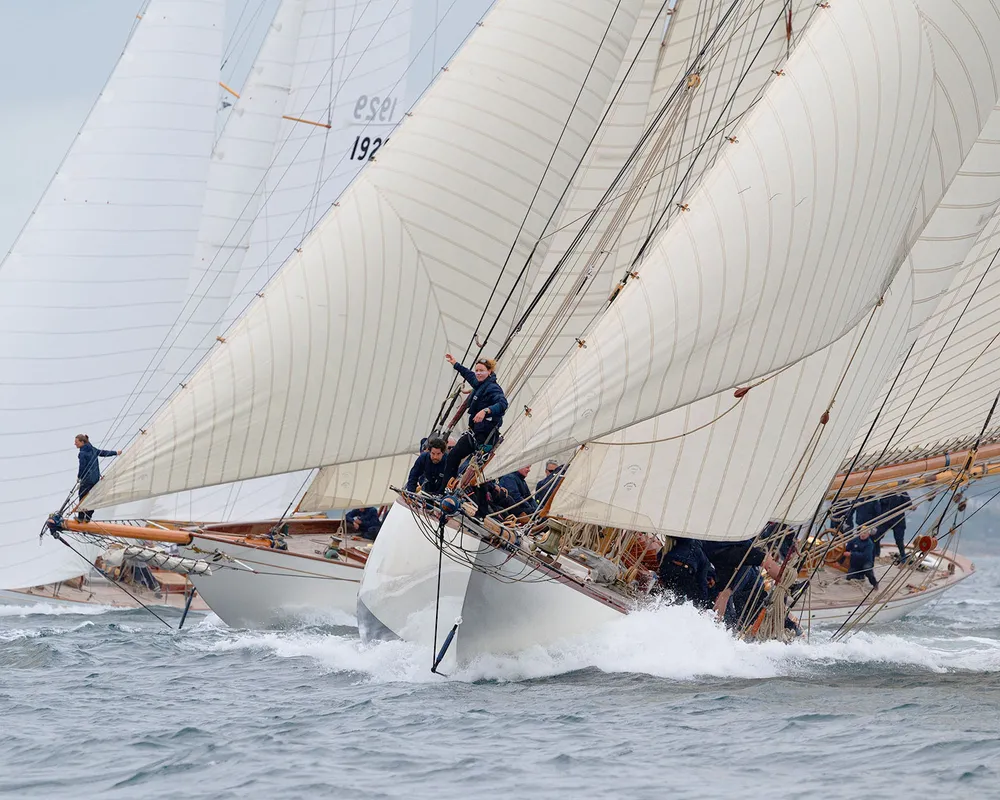

Indispensable passionate owners
Owner of Moonbeam and Mariquita, Frenchman Benoît Couturier is a fervent defender of classic yachting, and was instrumental in the creation of the Richard Mille Cup. “We wanted to organize real races for these boats, long and at night, which requires them to be in good condition, whereas many classic boats today are intended for cruising or are classified as commercial. We took the risk of creating a real sporting event, like the Fife Regatta. But there was no question of staying around Saint-Tropez, we needed something authentic. So we headed for the waters where these yachts were created in their day, offering them a circuit based on their original regattas.
“Strangely enough, you can’t find classic boats in England any more, even though they’re crazy about sailing; the yacht clubs that welcomed us were all very moved, we’re making people want to take part in a sporting event and get back into classic sailing.” He is also restoring Avatar, a Class M he intends to enter in the next Richard Mille Cup, and training a dozen youngsters in classic sailing on an 8mJI he acquired for the purpose. “They are passionate and would have done anything to take part in this race on Mariquita. They’ve learned how to make our old rigs do exactly what they need to do to run, and they sail fantastically.”
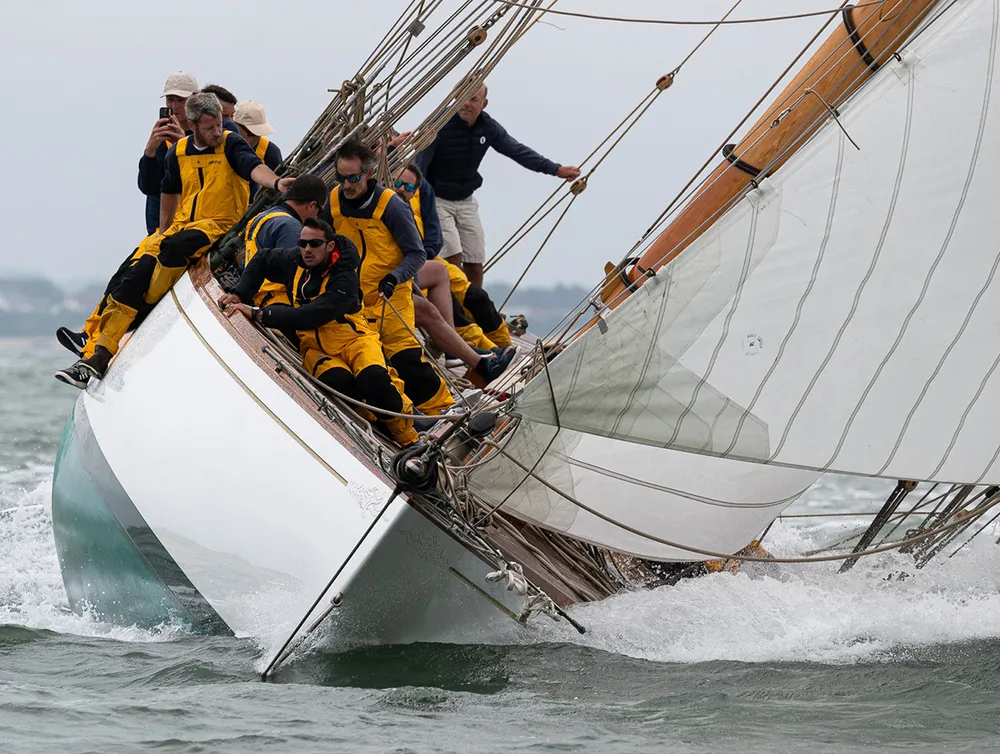
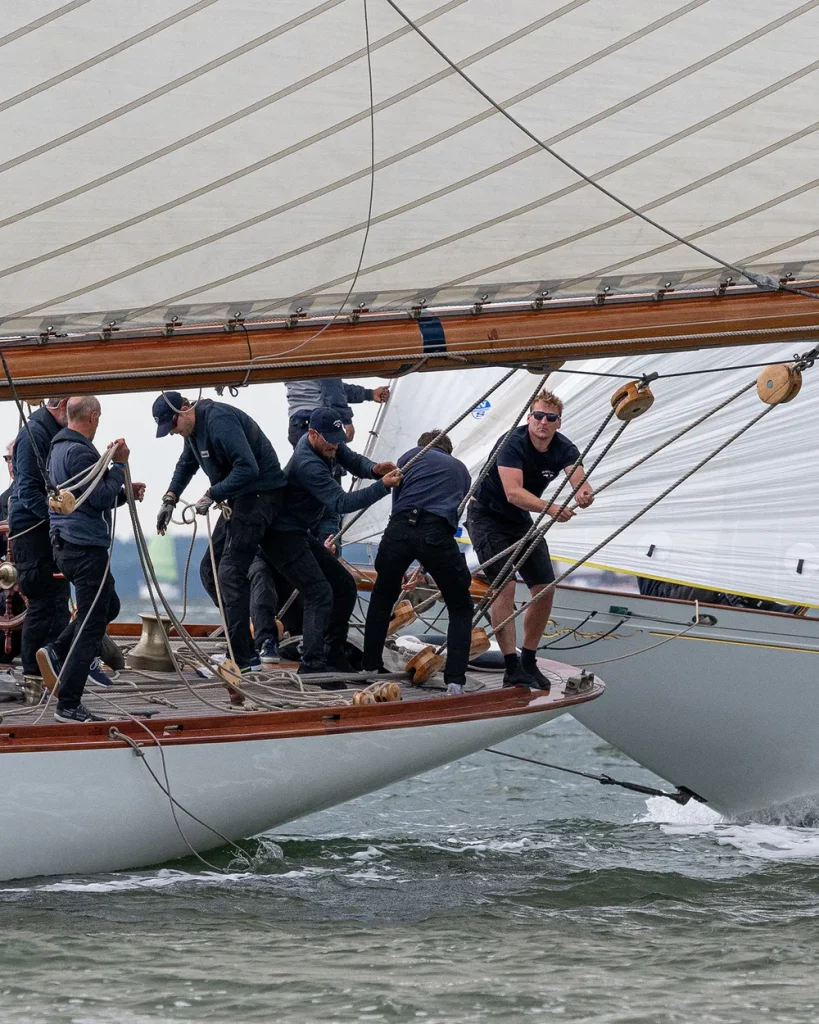
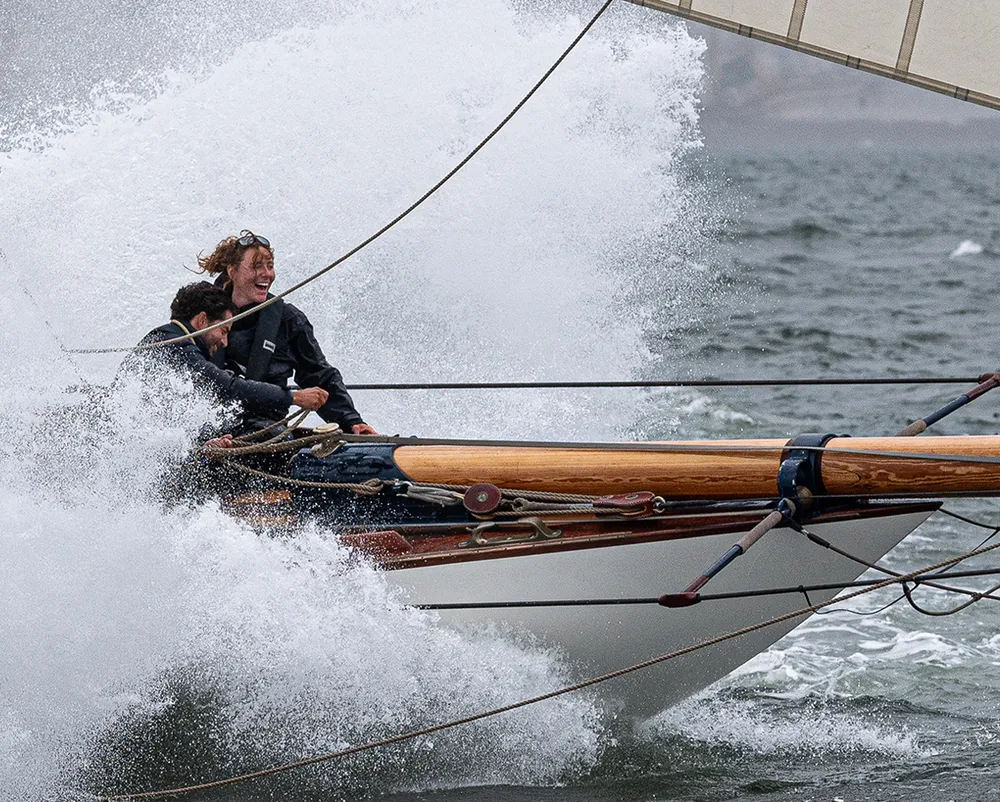
William Collier, event director, intends to build up the loyalty of these passionate owners, and plans to advertise future tours for two or three years, so that they can plan it more easily. “Not only do we make them rediscover the history of yachting, but it’s also a friendly and social meeting point where they make new friends. Over 300 people come together on the Richard Mille Cup. It also requires stamina, because we do ten races over two weeks. The choice of yacht clubs also reflects this historical and sporting logic, like the Société des Régates du Havre, France’s oldest coastal yacht club, which was immediately attracted by the concept. “The Richard Mille Cup will remain selective, but does not rule out continuing to tell the story of yachting on other coasts.
The 1 m high silver trophy is the work of the famous royal jeweller Garrard, creator of the America’s Cup trophy, and only the 40 cm replica is awarded to the winner of each edition. Alongside Mariquita, Patna won the smallest yacht category, finishing second overall.
